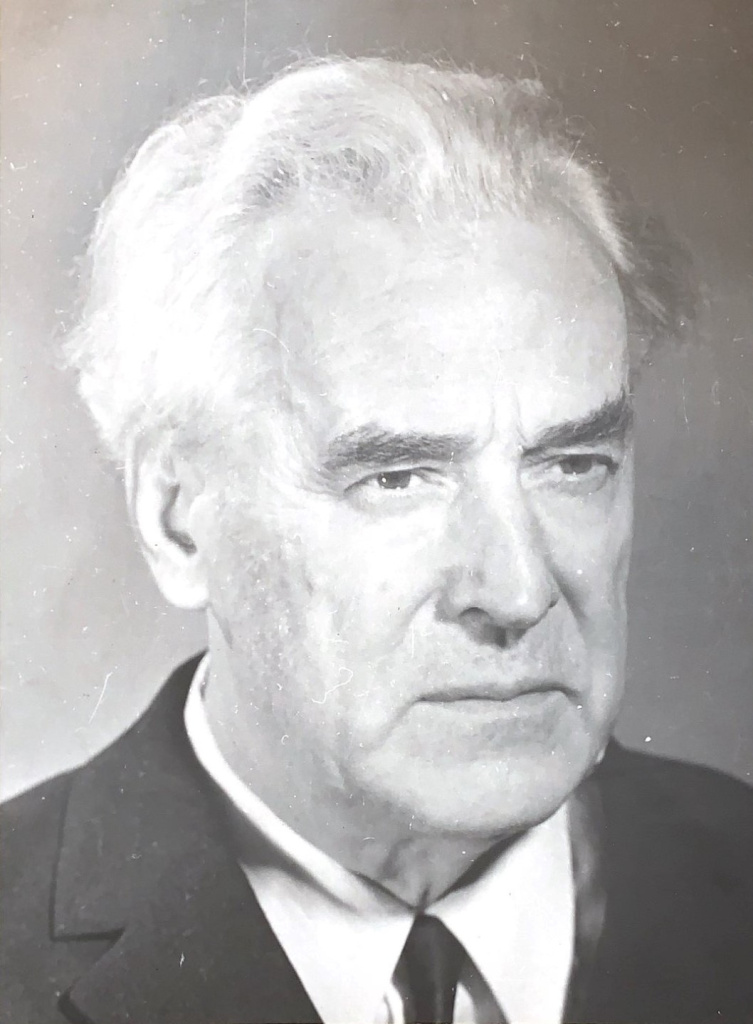 Aleksey Morozov
Aleksey Morozov
In 1986, a group of Leningrad civil engineers was awarded the USSR State Prize for the creation of membrane coatings for long-span buildings and structures. The first on the list of the working group was Aleksey Morozov (1907–1987), a graduate of the Department of Metal Structures of LIICS (now SPbGASU), architect, civil engineer, scientist, world-famous academician, head of the school of engineers of long-span structures. A specialist and patriot who during the war years built defensive structures in besieged Leningrad and all his life - significant objects throughout the country and abroad.
Aleksey Petrovich graduated from LIICS in 1933. His first professional development was a parabolic bunker more than 300 meters long for the Balkhash copper smelter in 1937. For many years, the specialist amazingly successfully combined his professional activities with two sports: he developed innovative engineering designs, and was considered the fifth best tennis racket of Leningrad, became the national champion in basketball.
In the besieged city, he built defensive structures and firing points on the first floors of houses on Liteiny Prospekt and the outskirts. And even in that harsh and hungry time, he did not give up sports: in the spring of 1942, during the blockade, Aleksey Morozov organized training for basketball players at the Palace of Culture and Technology named after the first five-year plan, and in August - the legendary basketball match at the Lenin's (now the Petrovsky) Stadium, in which his team, who worked at the plant, and three military teams of the 36th division took part. Aleksey Petrovich recalled that the first winter of the siege, hunger, dead windows of houses, frozen trams could not break the mighty nature of athletes.
Aleksey Morozov was awarded the medals “For the Defense of Leningrad” (1943), “For Valiant Labor in the Great Patriotic War of 1941–1945”.
In peacetime, the famous basketball player, master of sports and professional engineer invested a lot of effort and talent in the construction of the largest sports and entertainment facilities and stadiums. He said that the beauty of modern artistically meaningful designs is akin to the beauty of sports.
In the post-war years, he worked as the head of the sector, then as the chief designer of the institute for engineering of industrial buildings and complexes PI-1, where the development of long-span structures was underway. In 1952, Aleksey Petrovich was invited to perform complex mathematical calculations of the metal frame of the high-rise Leningradskaya Hotel on Komsomolskaya Square in Moscow. In 1955, under the leadership of Morozov, the Reinforced Concrete Products Plant named after Komsomol, assembly shop at the reinforced concrete products plant in Avtovo were built.
Aleksey Petrovich became one of the leading experts in the field of construction equipment, design of metallurgical, shipbuilding and other industrial enterprises, an engineer and scientist. This is how the “Morozov school” gradually was formed, which many famous engineers went through.
Under the leadership of Morozov, a new image of Leningrad-Petersburg was formed: without buildings with long-span structures it is no longer possible to imagine the panorama of the city. Among the famous buildings of Morozov are the Yubileiny Sports Palace, the yacht club on Petrovskaya Spit, ground pavilions of the Pionerskaya, Proletarskaya, Alexander Nevsky Square, Devyatkino, Udelnaya metro stations, the gym and educational buildings of St Petersburg State University in Peterhof. He also designed a number of buildings in other cities of the USSR and a sports palace in Suhl (GDR).
In 1972, A.P. Morozov’s monograph “Public Buildings and Spatial Structures” was published, in which the author summarized a wealth of material on the history of the issue from the times of Ancient Rome to the present. “By the end of the 20th century, humanity will learn to cover spans of 500–600 meters…” the scientist said at the end of his life.
Other materials of the "Scientific Regiment" project
Our Graduate Built the Road of Life
Front Line of the Architect Aleksandr Nikolsky
Researcher who Developed Science in Besieged Leningrad
Fights of Student Klinov
Engineer of the 3rd Belorussian Front
Nineteen-Year-Old Gunner Stormed Berlin
Path of a Volunteer: from Front-Line Roads to Space Development
Ivan Solomakhin: "The Most Memorable Battle was for this Devil's Hill!"
Fiery Dnieper of the Hero of the Soviet Union Aleksandr Prygunov
Approaching to the Victory
Fedor Komal's Front: from the War Start to the Victory
Junior Political Instructor Boris Gubanov: “Shells Were Whizzing, and the Ground Took off Nearby”
Viktor Kvyatkovsky, Radio Reconnaissance Operator of the Baltic Fleet
How the Chief Architect Nikolai Baranov Kept Leningrad "Hidden" from the Enemy
Architect Nikolai Khomutetsky: Four Years at the Forefront
Semyon Shifrin Thwarted Nazi Plans to Leave Leningrad Waterless
LISI in the Post-War Years
LISI Graduate Mikhail Zherbin, Design Engineer and Composer
Abdulla Mangushev: Four Years at the Front and the Whole Life in Science
Architects Zazerskys Built and Defended the City on the Neva River
Worked His Way Up From a Lieutenant Technician to the Galaxy of Mathematicians
Konstantin Sakhnovsky: From Cadet Of the Russian Empire to Academician of the USSR
Military Architect Of The Front Line Defense And Engineering Intelligence